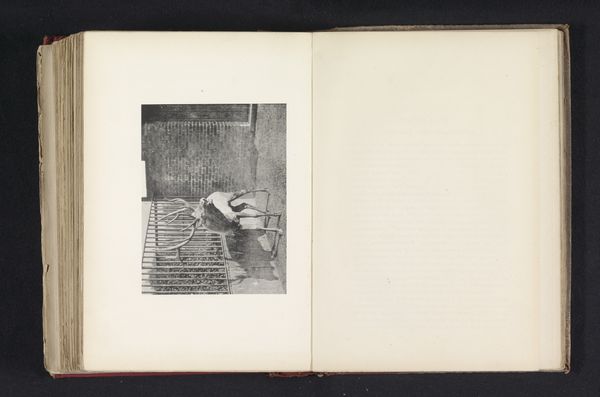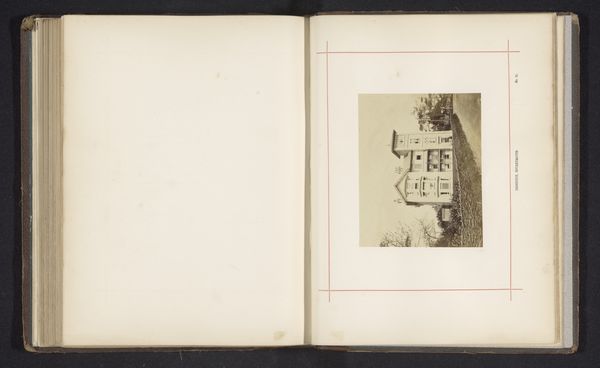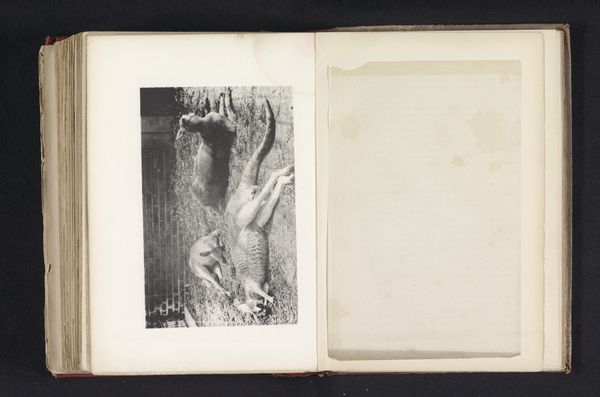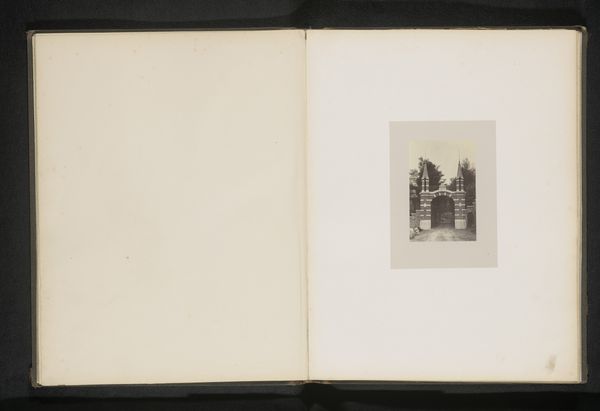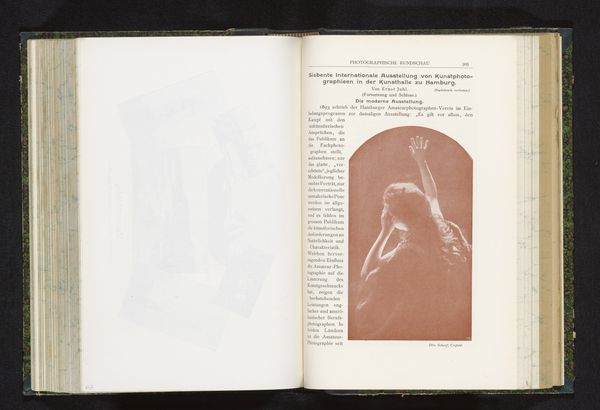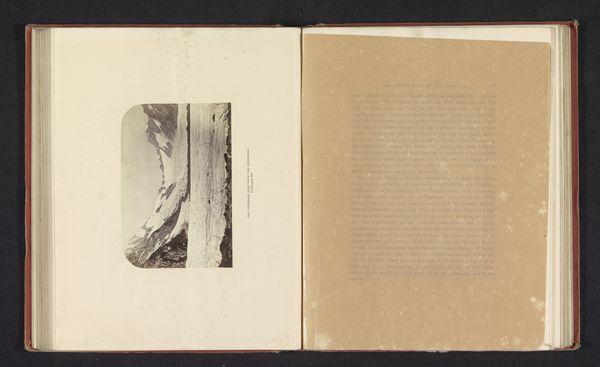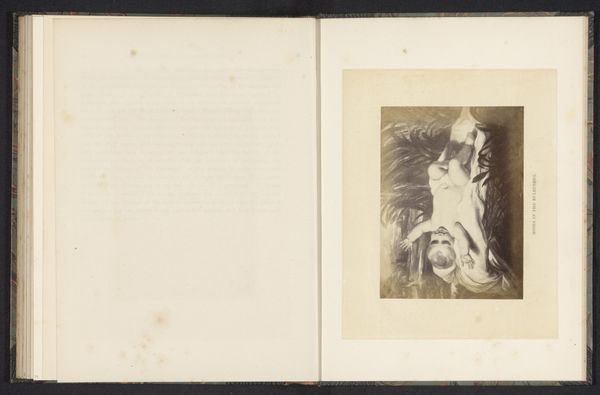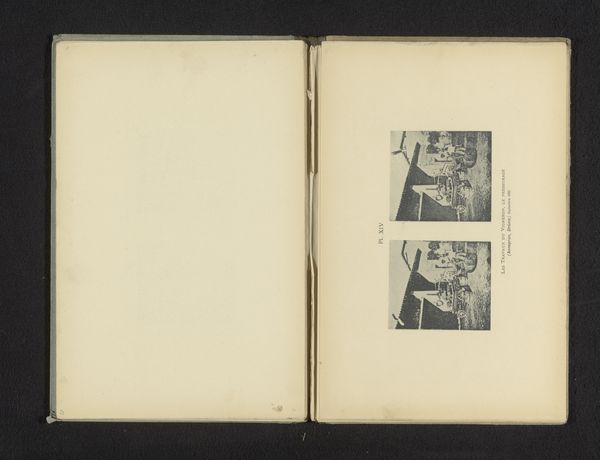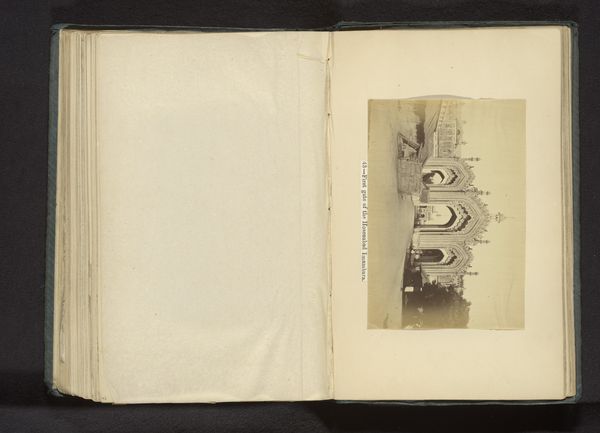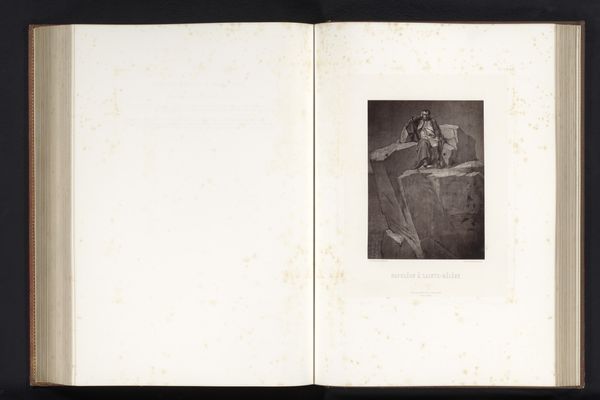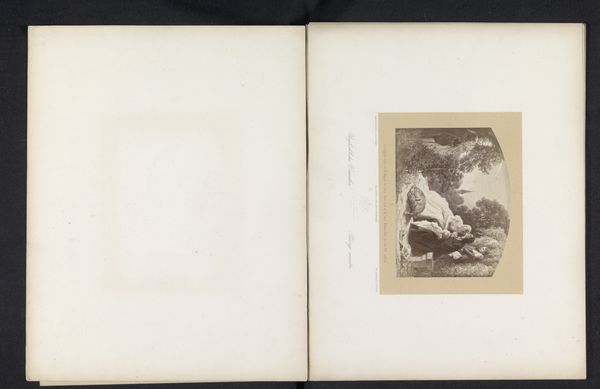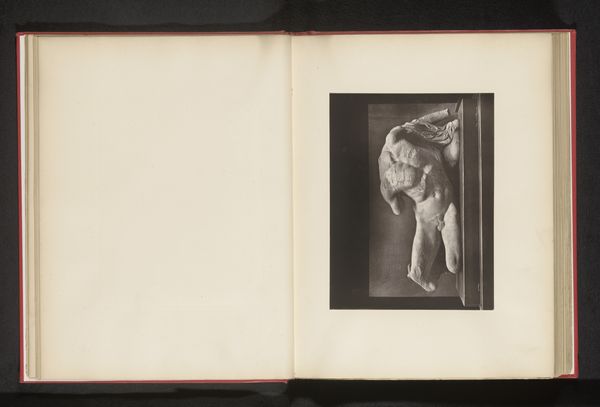
photography
#
statue
#
aged paper
#
homemade paper
#
script typography
#
hand drawn type
#
landscape
#
photography
#
personal sketchbook
#
hand-drawn typeface
#
fading type
#
thick font
#
sketchbook drawing
#
sketchbook art
Dimensions: height 190 mm, width 139 mm
Copyright: Rijks Museum: Open Domain
Curator: This is a photograph entitled "Gezicht op een monument voor Henry Wadsworth Longfellow in Portland," created before 1890. It seems to be part of a sketchbook, set opposite a blank page. What's your initial take on it? Editor: The first thing that strikes me is its melancholic aura. The contrast is quite high, with a sombre gray scale dominating the image. The aged paper and fading type definitely enhance this feeling. Curator: That’s interesting, given the subject. Longfellow was a cultural touchstone. So how was this monument itself presented publicly, what narratives was it perpetuating about literature and public life? Also, the open sketchbook asks interesting questions. Was it a form of homage, a contemplation of the artist's role in shaping public memory? Editor: Precisely! Consider how monuments, particularly to literary figures, function within the social fabric. They not only commemorate but also legitimize certain values. Who chose Longfellow, and what social standing or political agendas might they represent? This sketchbook photograph situates art as active cultural engagement. Curator: It highlights the dialogue between personal reflection and public performance. The choice of Longfellow – a writer whose work was deeply woven into the national identity – frames the artwork in terms of larger narratives. The composition, a statue framed by nature, creates a contrast between organic and the memorialized, but how does it further connect with the role of race and gender within those narratives? Editor: Indeed! It speaks to the exclusionary practices that shaped the monument and whose memory is preserved and validated by the political agenda. Perhaps we should consider what other artists or voices were systematically excluded at that historical moment in Portland? Whose stories are missing? This photographer could potentially address those complex, nuanced identities and make us examine historical bias within art history itself. Curator: That's the point! It pushes us to question the very foundation of cultural memory and who dictates its form. Editor: Exactly. A somber piece evoking the politics and privilege rooted within public monuments. The blank page calls to amplify other cultural and societal issues within our artistic lens. Curator: It forces us to contend with how images, both celebrated and obscure, shape our comprehension of the world and how it could, in fact, be shaped more ethically.
Comments
No comments
Be the first to comment and join the conversation on the ultimate creative platform.
